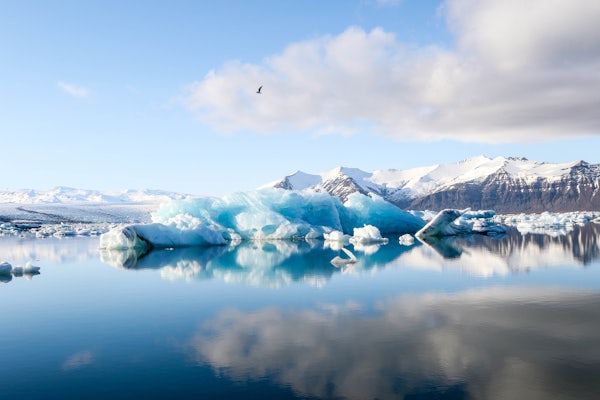Aerosols influence Arctic warming trends
Jian Wang to study Arctic aerosols and their impact on climate change

Jian Wang, professor of energy, environmental & chemical engineering and director of the Center for Aerosol Science and Engineering (CASE) in the McKelvey School of Engineering at Washington University in St. Louis, won a $766,552 grant from NASA for new research on Arctic aerosols. Wang will take high-resolution measurements of aerosol size distribution and analyze aerosol properties to understand how aerosols impact Arctic climate change.
“Aerosols have a strong influence on clouds and the surface energy budget in the Arctic,” Wang said. “That influence extends to Arctic Sea ice where the surface energy budget in late spring and summer strongly affects the sea ice extent in the fall. In the Arctic, clouds both cool the surface by reflecting sunlight and warm it by emitting infrared radiation. Aerosol particles act as seeds of cloud droplets. Under the clean conditions that are common in Arctic summer, even small changes in aerosol concentration can strongly influence cloud properties, such as cloud droplet number and the amount of water inside clouds, thereby impacting the surface energy budget and melting of sea ice.”
As part of the Arctic Radiation-Cloud-Aerosol-Surface Interaction Experiment (ARCSIX), a mission in NASA’s Airborne Science Program using two research aircraft, Wang will provide aerosol measurements to address high-priority science questions related to the spatial variation of the aerosol field and its impact on clouds and radiation. He will also conduct post-mission data analyses to investigate aerosol properties, sources and processes in the summertime Arctic.
In addition to measurements of complex local processes in the Arctic, NASA’s Airborne Science Program gives researchers access to satellite data providing high-resolution temporal and spatial data on aerosols and enables them to couple local data with global satellite observations. Combining data from various scales supports a better understanding of the complete Earth system.
“Our overall goal with this project is to gain a predictive understanding of the rapidly warming climate and retreating sea ice in the Arctic,” Wang said. “This research uses novel instruments developed by my group and builds on our previous research of marine aerosols and their impact on clouds.”




